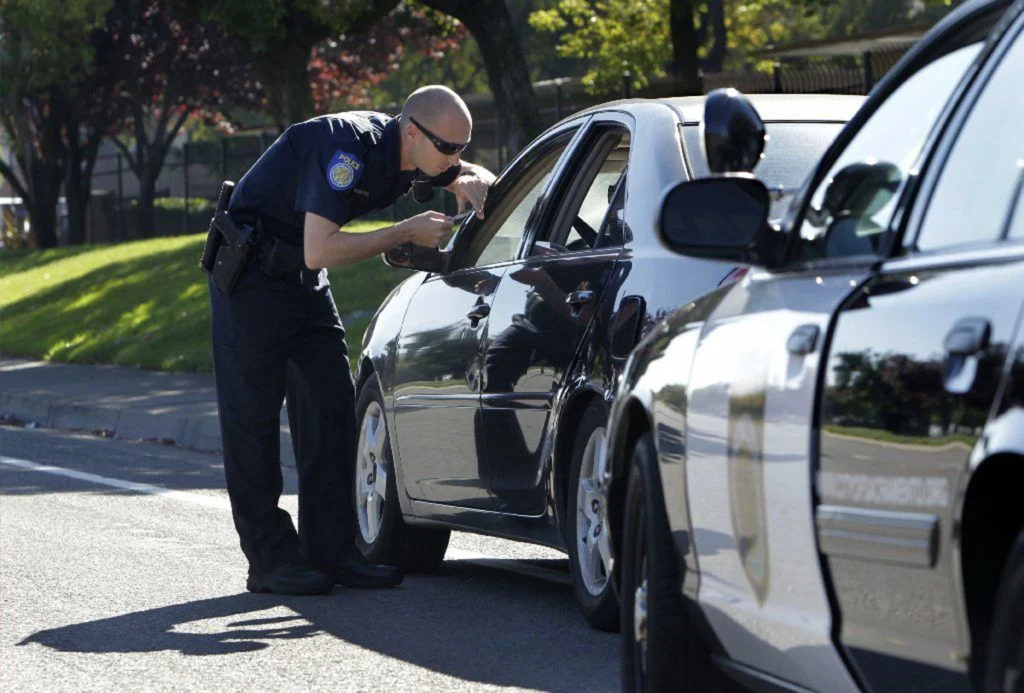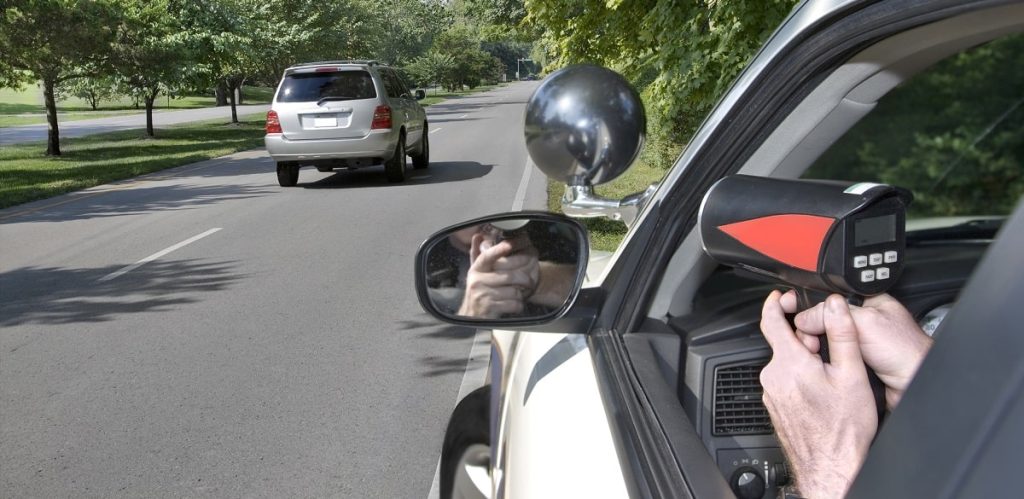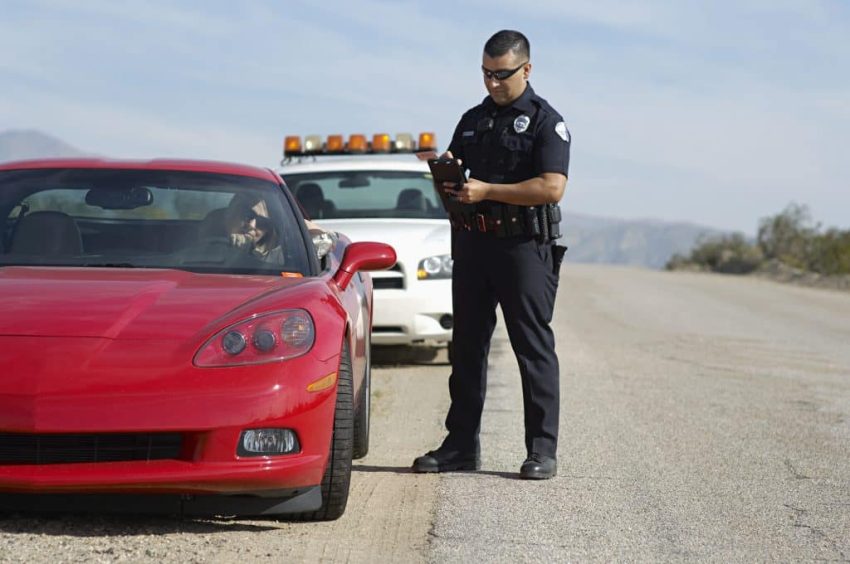Yes, police cars can indeed catch you speeding without the need to pull you over in the traditional sense. They employ various sophisticated technologies to monitor vehicle speeds.
Radar and Lidar devices are commonly used, allowing officers to measure a vehicle’s speed accurately from a distance. Automated license plate recognition (ALPR) systems are also in play, which can instantly capture license plate information, including speed violations.
Surveillance cameras, both fixed and mobile, further contribute to speed detection. However, these methods come with challenges, such as weather conditions affecting accuracy. The legality and privacy aspects vary, with speed cameras sometimes raising concerns.
While these technologies offer a means to enforce speed limits efficiently, it’s essential for drivers to remain aware and responsible to prevent speeding violations.
How do speeding tickets work?

In the United Kingdom, a speeding ticket, known as a Notice of Intended Prosecution (NIP), is dispatched to the registered keeper of the vehicle within 14 days of an alleged speeding offence. It’s important to note that an NIP doesn’t automatically signify an intention to prosecute; rather, it grants the police the option to do so if they deem it necessary.
Owner’s Response Requirement
Upon receiving an NIP, the registered owner of the vehicle is required to respond within 28 days. They must either complete a Section 172 notice, specifying the identity of the driver at the time of the offence, or provide an explanatory statement.
Failure to comply with this requirement, particularly if the owner is uncertain about the driver’s identity, can result in charges for failing to provide information. This may entail a fine of up to £1,000 and 6 penalty points on their driving licence.
Potential Legal Consequences
If there is substantial evidence of the speeding offence, law enforcement generally proceeds by issuing either a Fixed Penalty Notice or a court summons. The consequence is a financial penalty and possibly additional penalties, such as accruing points on one’s driving licence or even facing disqualification from driving. Individuals must understand these procedures and abide by them to mitigate the repercussions of speeding offences.
What Are The Most Commonly Used Speed Detection Technologies?
Speed detection technologies are essential tools that law enforcement agencies use to monitor and enforce speed limits on roadways. These technologies play a crucial role in promoting road safety and reducing accidents caused by speeding. Here are some of the most commonly used speed detection technologies
Radar Speed Guns
Radar speed guns use radio waves to detect the speed of vehicles. They emit radio waves toward a moving vehicle, which bounce back to the device. By measuring the frequency change of these waves, the radar gun calculates the vehicle’s speed.
Laser Speed Guns
Laser speed guns operate similarly to radar guns but use laser technology instead of radio waves. They emit a laser beam at a vehicle and measure the time it takes for the laser to bounce back, calculating the vehicle’s speed accurately.
Speed Cameras
Speed cameras are stationary devices placed at various locations, such as intersections, highways, or school zones. They capture images or videos of vehicles exceeding the speed limit. Citations are then issued to the vehicle owners based on the recorded evidence.
Aircraft Surveillance
Law enforcement agencies sometimes use aircraft to monitor traffic from above. Aircraft can track vehicle speeds and relay this information to ground units for enforcement.
Speed Enforcement in Unmarked Vehicles
Many police departments use unmarked vehicles equipped with radar or laser technology to blend in with traffic. This allows them to identify speeding vehicles without being easily noticeable.
VASCAR Technology
Visual Average Speed Computer and Recorder (VASCAR) is a technology used to calculate a vehicle’s speed by measuring the time it takes to travel between two known points. Police cars can use this technology to determine a vehicle’s speed and issue citations.
Automated License Plate Readers
Automated license plate readers are cameras that capture license plate information of passing vehicles. They can be used to track vehicle speeds, and citations are issued based on the captured data.
Can a patrol car send NIP without pulling you over if speeding?
Yes, a patrol car equipped with the necessary technology can issue a Notice of Intended Prosecution (NIP) without pulling you over if you are caught speeding. This innovative method of speed enforcement is made possible through Automatic Number Plate Recognition (ANPR) technology. ANPR-equipped patrol cars can scan license plates and compare them to databases of registered vehicles.
If your vehicle is detected by the ANPR camera as exceeding the speed limit, the NIP is sent to the registered owner of the vehicle, requesting the driver’s details. In cases where the driver can be identified from the images or data captured, the NIP is directed to the responsible driver. However, if the driver cannot be clearly identified, the registered owner is obligated to provide the necessary information.
This approach offers several advantages, including efficiency and enhanced accuracy in speed detection. It reduces the likelihood of human errors in issuing fines and citations. Moreover, it plays a pivotal role in promoting public safety by deterring reckless driving and high-speed violations. The technology ensures that drivers cannot escape the watchful eye of ANPR-equipped patrol cars, making roads safer for all.
It’s important to note that the procedures for issuing NIPs and the use of ANPR technology may vary by jurisdiction, and not all patrol cars are equipped with this technology. The application of NIPs without a traditional traffic stop is subject to legal regulations and regional limitations, so drivers must be aware of the rules and procedures related to NIPs and speeding enforcement in their specific area.
How do speeding fines work?

Speeding fines in the UK are imposed on drivers who exceed the legal speed limit, and they come with specific penalties based on the severity of the offence and the driver’s income. These fines are categorized into three bands
- Band A: This applies to drivers who exceed the speed limit by up to 10mph. The fine typically ranges from 25% to 75% of the driver’s weekly income.
- Band B: If a driver goes over the speed limit by 11 to 21mph, they fall into this category, and the fine usually ranges from 75% to 125% of their weekly income.
- Band C: For more significant speed violations of 22mph or more over the speed limit, the fine can be 125% to 175% of the driver’s weekly income.
The maximum fine for speeding is £1,000, although, for motorway offences, this can increase to £2,500 if a driver pleads not guilty and is found guilty in court.
In addition to the monetary fine, drivers caught speeding may receive penalty points on their driving licence. These points remain on the driver’s record for three years. Accumulating 12 or more penalty points within a three-year period results in disqualification from driving.
It’s important to note that a recommendation from the National Police Chiefs’ Council suggests a 10% leeway above the speed limit, along with an additional 2mph, though this isn’t legally binding. Whether a driver is prosecuted or shown leniency ultimately depends on the discretion of local law enforcement or judicial authorities.
To avoid speeding fines, it’s crucial to pay close attention to speed limit signs while driving. If caught exceeding the limit, cooperating with authorities and accepting a Fixed Penalty Notice is advisable, especially for first-time offenders.
However, drivers who believe they’ve been wrongly accused or wish to dispute the charge may choose to plead not guilty in court. Regardless of the situation, responsible and law-abiding driving is the best practice to prevent speeding violations and the associated fines and penalties.
FAQ
What should you do if you are caught?
If you are caught speeding in the UK, you should respond promptly to the Notice of Intended Prosecution (NIP) or Fixed Penalty Notice you receive in the mail. You can either accept the penalty, which often involves a fine and penalty points on your driving license, or choose to contest the charge in court if you believe you have been wrongly accused.
What are the different types of speed camera in the UK?
The UK employs various types of speed cameras, including Gatso cameras, average speed cameras, Truvelo cameras, SPECS cameras, and more. Each type serves a specific purpose in monitoring and enforcing speed limits. Gatso cameras, for instance, capture speeding vehicles with a single photograph, while average speed cameras calculate a vehicle’s average speed over a section of road.
What reduces the cost of a fine?
In some cases, attending a speed awareness course in the UK can reduce the cost of a fine. These courses are offered to eligible drivers as an alternative to penalty points and a fine. Completing the course helps maintain a clean driving record and may lead to lower insurance premiums.
What Are Unmarked Police Cars Used For?
Unmarked police cars are used for a variety of law enforcement purposes, including traffic enforcement, surveillance, and undercover operations. They allow officers to monitor and respond to violations without drawing attention to themselves, enhancing their ability to detect and address unlawful activities.
Do Unmarked Police Cars Have Speed Cameras in the UK?
Unmarked police cars may be equipped with speed detection technology, including radar or laser devices. While they don’t typically have visible speed cameras on the exterior, these vehicles can monitor and record speeding violations.
Do Police Need Proof of Speeding?
In the UK, police officers do not need photographic proof to issue a speeding ticket. They can use their own observations, speed detection equipment, and other evidence to support a charge of speeding. However, photographic or video evidence can be used to strengthen a case in court, especially in contested situations.
Final words
To sum up, the ability of police cars to catch speeders without pulling them over is a testament to the advancements in law enforcement technology. Radar, Lidar devices, automated license plate recognition systems, and surveillance cameras play a crucial role in maintaining road safety.
However, drivers need to remember that abiding by speed limits and driving responsibly is the most effective way to avoid speeding violations and their consequences. While technology can help enforce speed limits, it’s the responsibility of every driver to make safe and legal choices on the road.
So, stay alert, obey posted speed limits, and contribute to a safer driving environment for everyone.

